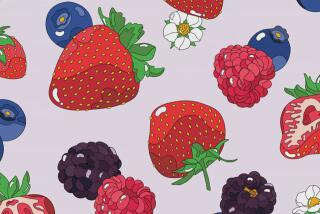One of the most consistently offered pieces...
One of the most consistently offered pieces of advice when it comes to getting the full range of nutrients, antioxidants and other phytochemicals is to eat a wide variety of fruits and vegetables. But too many people get stuck in a fruit or vegetable rut, eating the same things, not wanting to experiment even a little bit.
With specialty markets springing up everywhere, there’s no reason not to try some of the more unusual fruits that Mother Nature has put together:
Atemoya: This fruit is a cross between a cherimoya (see below) and a sugar apple. It looks like a clay artichoke, which doesn’t sound appealing, but inside it’s the color of cream, and it tastes and feels like custard. Nutritionally, it has a high potassium content.
Look for a pale green color that yields slightly to pressure from your fingers.
Carambola: This unusual-looking fruit is also called the star fruit because when you slice it crosswise, you end up with perfect five-pointed stars. The flavor is sweet-tart, reminiscent of a blend of such fruits as plums, pineapples, grapes and lemons.
Cherimoya: This fruit is known also as the custard apple, or sherbet fruit. It looks like a green pinecone, but inside it has a custard-like texture and flavor. Nutritionally it is a good source of vitamin C and even has some iron.
This fruit is usually available in the winter and early spring. The size doesn’t matter, but look for a fruit that is yellow-green all over.
Longan: This fruit is native to Asia and can range from grape-to plum-size. It’s related to the lychee and is sometimes known as a dragoneye. If you peel one, you’ll know why--but don’t let that stop you. It’s a good source of vitamin C.
Look for fruit that is heavy for its size and has uncracked shells.
Pomelo: This is actually a kind of ancient grapefruit. The size of a melon and pear-shaped, it’s an excellent source of vitamin C.
It is pinkish or greenish yellow, and the flesh separates into segments, like that of a grapefruit. It can be very tart or very sweet.
Sapote (or sapota): A white sapote is about the size of an orange but has a green to yellow skin. Inside it is white and creamy. Choose a firm fruit that you can ripen at room temperature for a day or two. Once it gets soft, put it in the refrigerator.
You can eat it just as you would a plum, but the skin is bitter, so you may want to spoon out the fruit.
Ugli fruit: This is a fairly new citrus fruit that is actually a hybrid of a grapefruit and an orange or a tangerine.
It’s sweeter than grapefruit and has almost no seeds. Looking at the skin might give you a clue as to how it got its name. It is thick, rough and puffy, and can be a kind of blotchy orange-green.
Choose a fruit that is heavy but gives in to slight pressure.
More to Read
Eat your way across L.A.
Get our weekly Tasting Notes newsletter for reviews, news and more.
You may occasionally receive promotional content from the Los Angeles Times.










